Training and Exercises in Winter Warfare
External Author2024-04-11T12:40:36+00:00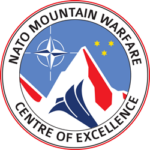

The history of mountain warfare dates back thousands of years. Technological advancements initially transformed mountaineering, and subsequently, the use and conduct of warfare in mountainous terrain.
History shows that the environmental conditions in mountainous regions both reduced the combat effectiveness of deployed forces and significantly contributed to losses. Many casualties can be attributed to inadequate planning, training, and equipment, which were often underestimated by military leaders and still are to some extent today. Potential impacts on all areas, particularly mobility and medical support, are described by the geofactors for winter combat – especially for the geo-categories of land systems and land mobility. With the inclusion of mountain terrain and regions with extreme climatic conditions in operational planning, armed forces must be cross-functionally enabled to operate in this terrain.
Geopolitical changes in the Arctic – A stage for a new Cold War between the great powers?
The Arctic and the Antarctic as political arenas
The political agenda of the international community in the Polar Region has been characterized by cooperation and willingness to compromise in recent decades. Coordination among Arctic states has been carried out since 1996 in the Arctic Council. However, this dialogue forum faces challenges in light of climate change and geopolitical developments. As the ice recedes, calls for commercial use of the Polar Regions grow louder.
Paradigm shift and new geopolitical interests
The Polar Regions are currently undergoing a fundamental shift in significance. As climate change progresses and technology in ships, aircraft, buildings, information, and communication channels becomes more sophisticated, humans are range of action in the Arctic and Antarctic. Today, there are significantly more states and actors active in both regions than there were at the turn of the millennium – each pursuing individual interests. Climate change has, in a way, triggered a geopolitical chain reaction, posing new challenges for both Arctic coastal states and member states of the Antarctic Treaty System.
Economic interests
The more water and land areas are uncovered by shrinking ice masses in the Arctic and Antarctic, the more they also stimulate economic desires among various actors and interest groups such as travel companies, fishing fleets, resource exploration companies, and shipping companies. According to the United States Geological Survey (USGS), 22 percent of undiscovered oil and gas reserves are located north of the Arctic Circle alone. Companies like the Danish firm MAERSK are already sending cargo ships from Northern Europe through the Northeast Passage to the Indo-Pacific region for testing purposes – hoping to save significant transportation time and costs along this route in the future.
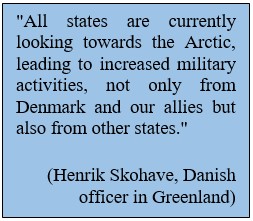
Security concerns
As sea ice melts, a natural barrier is disappearing for the Arctic coastal states, which, according to some observers, has historically protected them from a potential military invasion from the north. This new security situation unsettles the Nordic countries, especially as increased economic engagement in the Arctic region is accompanied by a rise in military activities and the potential for latent conflicts to resurface. During the Cold War era, the Arctic was a key region of military confrontation between the two superpowers of the time, the USA and the Soviet Union. Both sides maintained large military bases and missile launch sites north of the Arctic Circle. However, nearly all of these locations were closed during the détente of the 1990s. With climate change and the current debate over sea routes and transit rights, military presence in the northern regions of the Arctic coastal states could once again increase.
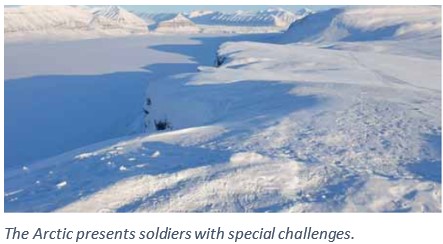
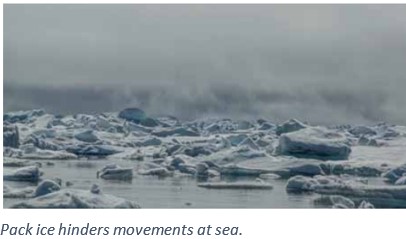
Climatic conditions
Diversity of the Arctic landscape
Snow and ice cover a portion of the land and sea areas year-round, particularly in the High Arctic, whereas ice melts during the summer months in more southern latitudes. The land areas in the Arctic span a coastline of approximately 45,400 km. The diverse Arctic landscape is characterized by mountain ranges, glaciers, vast hilly terrains, swamps, meadows, and plains. GUNNBØRN FJELD in eastern Greenland, at approximately 3,700 m high, is the highest purely Arctic mountain range. The highest peak in the Arctic is also the highest mountain in North America: Denali (formerly known as Mount McKinley) with a height of nearly 6,200 m. Wetlands comprise about 70 percent of the landmasses and are an important habitat for migratory birds and other animals.
Light and darkness – on a semi-annual basis
The Arctic is strongly influenced by the polar day and the polar night. During the polar day in the summer months, the sun does not set below the horizon. At the North Pole itself, the polar day lasts from April to September. As one moves away from the North Pole towards the northern Arctic Circle, the time during which the sun is constantly visible decreases. Therefore, the polar day in Norwegian TROMSØ lasts from the end of May to the end of July. Conversely, the polar night occurs when the sun remains below the horizon, enveloping the Arctic more or less in darkness. Northern Norway is not synonymous with the Arctic. The Arctic presents entirely different and new challenges. Not only equipment but also training must be adapted to the constant changes. Insights from recent exercises such as “Cold Response” are just a small piece of the puzzle that helps in fighting and surviving in the Arctic. Winter warfare in Polar Regions is dynamic.
What additional challenges are expected?
The climatic and regional peculiarities of the polar region limit communication capabilities. Current satellite communication systems north of the Arctic Circle are only partially operational due to the low angle for satellite connectivity and signal interference caused by natural obstacles. In the Arctic winter, another limitation arises. The phenomenon known as the Northern Lights (Aurora Borealis) means that communication links based on high-frequency systems are only possible within a very narrow window of about two hours per day. Due to the cold, operational range is also extremely limited. At low temperatures, often below -30°C, batteries and accumulators, for example, have only about one-third of their usual capacity and lifespan. The use of optronic means must also be carefully considered. Condensing breath causes LCD displays or optical devices such as night vision goggles to fog up and immediately freeze. Prolonged firefighting is inconceivable as there is no replenishment available. Additionally, shooting at long distances should be practiced as temperature significantly affects ballistics. The troops in operation, regardless of their strength, are left to fend for themselves. This also affects the treatment of casualties. The principle of the so-called “Golden Hour,” where every casualty must be transferred to a level 2 or 3 medical facility within one hour of injury, may not always be achievable in these remote regions, even without enemy threat. Soldiers operating in Arctic regions must not only learn to deal with new challenges but also be able to protect themselves from the local wildlife. Essential in training is the self-protection of all stationary or temporary bases. While alarm fences help deter polar bears, soldiers must also be trained in using weapons against polar bears. Training and exercises will also focus on establishing logistical support. One of the biggest challenges will be ensuring efficient energy generation. Battery operation will be limited, so reliance on alternative energy sources must be ensured. Fuel cells must gain importance in training more than ever. Rescue and medical care for wounded and injured personnel will take time. Working with new resources will be necessary to ensure they are adequately cared for and evacuated.
Unmanned Aerial System
Many experiences still need to be gathered in this area. Lack of or only temporary satellite support makes this system only partially operational. Flight personnel must train on-site to understand the different geofactors so that deployment can occur at the right place and time.
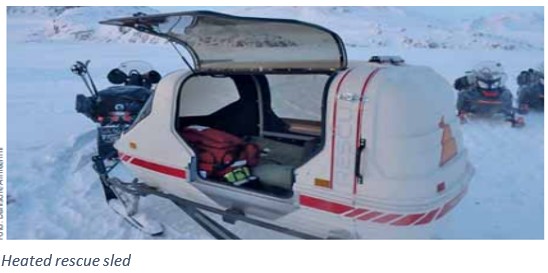
Today’s training and exercises in winter warfare
The aim of training and exercises in winter warfare is to enable soldiers to fight, endure, and survive under these conditions. Adaptations to the training landscape of the BUNDESWEHR, as well as time constraints, make it difficult to impart a cross-functional capability for winter warfare. Therefore, it will be reserved for specialists to conduct training, exercises, and ultimately operations in Polar Regions or at high altitudes. Only they have the necessary expertise and equipment to operate, fight, and survive in these climate zones and environments. As illustrated, cold to extremely cold climate zones are sometimes the greatest challenge for humans, animals, clothing, personal equipment, and heavy machinery. Training and equipment must therefore be adapted to these conditions. Even small mistakes are likely to have significant consequences and can lead to personnel and equipment failure within a short period. The Mountain and Winter Warfare School, with its extensive experience in winter warfare, conducts the majority of the training. Additionally, the training of the troops, as well as planners, operators, and logisticians, is further strengthened, primarily in units of the Mountain Infantry Brigade 23. Realistic winter warfare training is sometimes conducted as part of NATO exercises. In this regard, the challenging climatic conditions are trained and practiced during the multinational exercise “Cold Response” in Northern Norway. The experiences gained from training in the Alpine region are consolidated and deepened to prepare for the specific environmental influences in Northern Norway.
Summary
Winter warfare training in the 21st century adapts not only materially but also organizationally and functionally to the climatic changes across our globe. During the exercise series “Cold Response” in Northern Norway, soldiers are prepared for survival and operations, including combat, in extreme cold. The focus lies on ensuring endurance and survival. Only those who master survival in extreme cold can fulfil missions in Polar Regions. Without functional logistic and medical support, maintaining combat capability over an extended period will be challenging. Every malfunctioning link, from personal equipment preparation to vehicle recovery training, will lead to failure. The political dynamics in the Polar Regions are currently growing steadily, along with the need to maintain ready forces in these regions. Geopolitical disputes among the coastal states, claims to natural resources, and control of sea routes becoming accessible due to climate change will increasingly demand allied forces in the near future. Equipment and training must therefore be quickly adapted to these new challenges. Exercises must also take place outside of Northern Norway to train survival and combat in Polar Regions. Specialization in only one service will not be enough. The Navy and Air Force must be integrated into winter warfare training (Polar Regions). Only together can alliance commitments be fulfilled.




